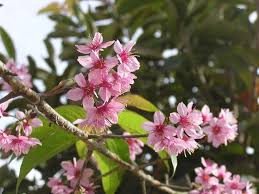
Marigolds, with their bright blooms and hardy nature, play a significant role in local ecology and ecosystems. From supporting pollinators to improving soil health, these versatile flowers offer a range of benefits that contribute to the overall health and balance of natural environments. In this article, we explore the various ways in which marigolds impact local ecology and ecosystems:
**1. Pollinator Support:**
Marigolds are known for attracting a diverse array of pollinators, including bees, butterflies, and hoverflies. Their nectar-rich flowers provide essential food sources for these beneficial insects, supporting their populations and contributing to the pollination of nearby plants. By attracting pollinators, marigolds help maintain biodiversity and ecosystem stability.
**2. Pest Repellent Properties:**
Certain compounds produced by marigolds, such as thiophenes and limonene, have natural insect-repellent properties. Planting marigolds in gardens and agricultural fields can help deter pests such as aphids, nematodes, and whiteflies, reducing the need for chemical pesticides and promoting environmentally friendly pest management practices.
**3. Soil Enhancement:**
Marigolds are valued for their ability to improve soil health and fertility. Their roots release compounds that suppress harmful soil nematodes, reducing the risk of plant damage and improving overall soil quality. Additionally, marigold foliage can be incorporated into the soil as green manure, adding organic matter and nutrients to support plant growth.
**4. Weed Suppression:**
The dense foliage of marigolds helps to suppress weed growth by shading the soil and inhibiting weed seed germination. By reducing competition from weeds, marigolds allow desirable plants to thrive, promoting a healthier and more diverse ecosystem.
**5. Erosion Control:**
In areas prone to soil erosion, such as slopes and embankments, planting marigolds can help stabilize the soil and prevent erosion. The dense root systems of marigold plants bind soil particles together, reducing the risk of runoff and soil loss during heavy rainfall or wind events.
**6. Cultural and Medicinal Uses:**
In addition to their ecological benefits, marigolds have cultural and medicinal significance in many communities. They are used in traditional medicine for their anti-inflammatory, antimicrobial, and wound-healing properties. Marigold flowers are also used in religious ceremonies, culinary preparations, and as natural dyes.
**7. Aesthetic Appeal:**
Last but not least, marigolds contribute to the aesthetic beauty of landscapes, gardens, and public spaces. Their vibrant colors and cheerful blooms enhance visual appeal, creating inviting and attractive environments for humans and wildlife alike.
In conclusion, marigolds are more than just decorative flowers—they are valuable contributors to local ecology and ecosystems. By supporting pollinators, deterring pests, improving soil health, and providing a range of other benefits, marigolds play an essential role in maintaining the balance and vitality of natural environments. Incorporating marigolds into gardens, landscapes, and agricultural practices can help promote sustainability and resilience in ecosystems around the world.










